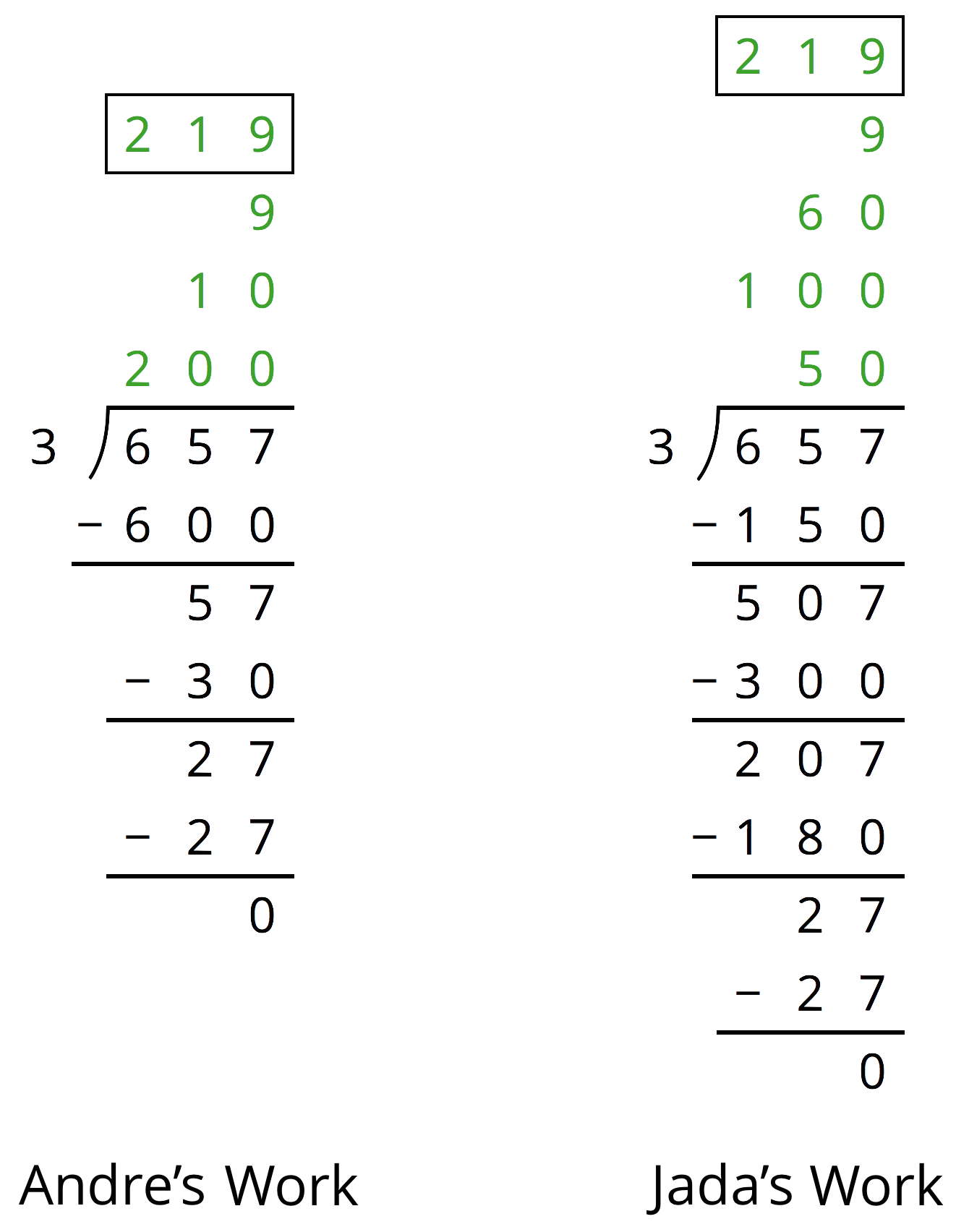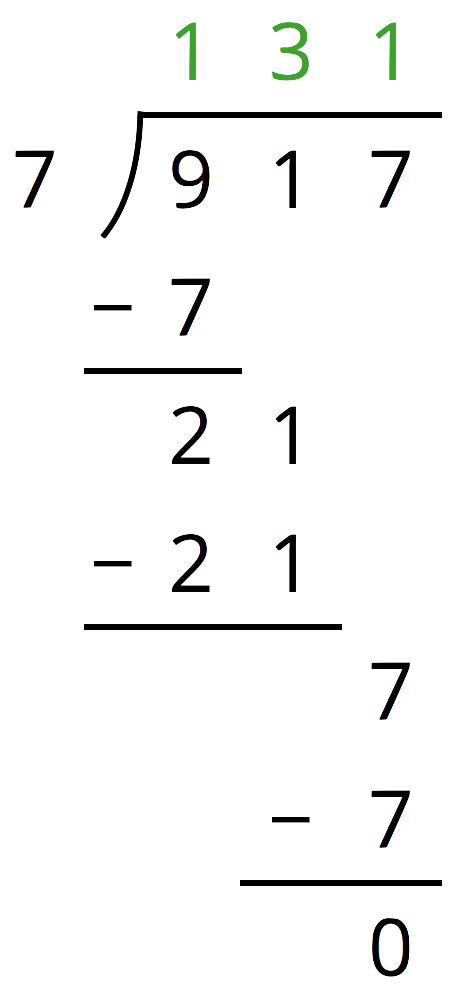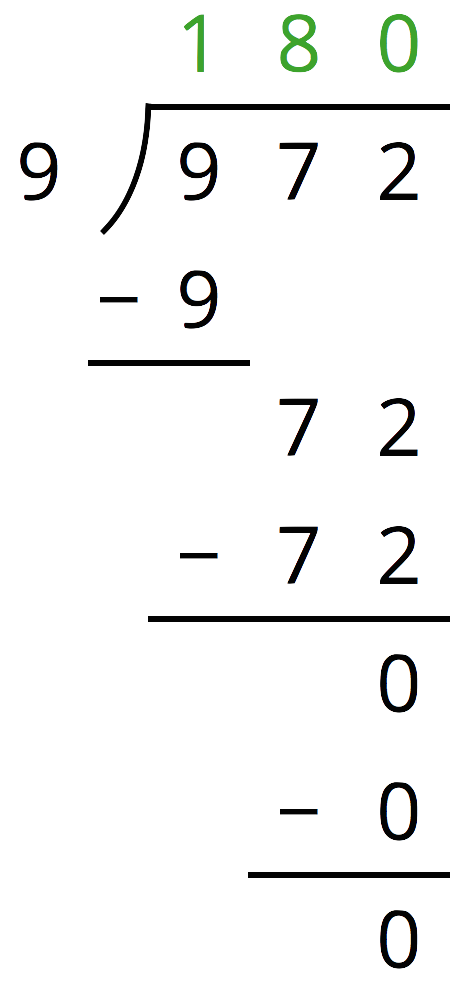Lesson 18
Using Long Division
Let’s divide whole numbers.
Problem 1
Andre and Jada both found \(657 \div 3\) using the partial quotients method, but they did the calculations differently, as shown here.


- How is Jada's work the same as Andre’s work? How is it different?
- Explain why they have the same answer.
Problem 2
Here is a long-division calculation of \(917 \div 7\).

- There is a 7 under the 9 of 917. What does this 7 represent?
- What does the subtraction of 7 from 9 mean?
- Why is a 1 written next to the 2 from \(9-7\)?
Problem 3
Han's calculation of \(972 \div 9\) is shown here.

- Find \(180 \boldcdot 9\).
- Use your calculation of \(180 \boldcdot 9\) to explain how you know Han has made a mistake.
- Identify and correct Han’s mistake.
Problem 4
Find each quotient.

Problem 5
The mass of one coin is 16.718 grams. The mass of a second coin is 27.22 grams. How much greater is the mass of the second coin than the first? Show your reasoning.
Problem 6
One micrometer is a millionth of a meter. A certain spider web is 4 micrometers thick. A fiber in a shirt is 1 hundred-thousandth of a meter thick.
-
Which is wider, the spider web or the fiber? Explain your reasoning.
- How many meters wider?